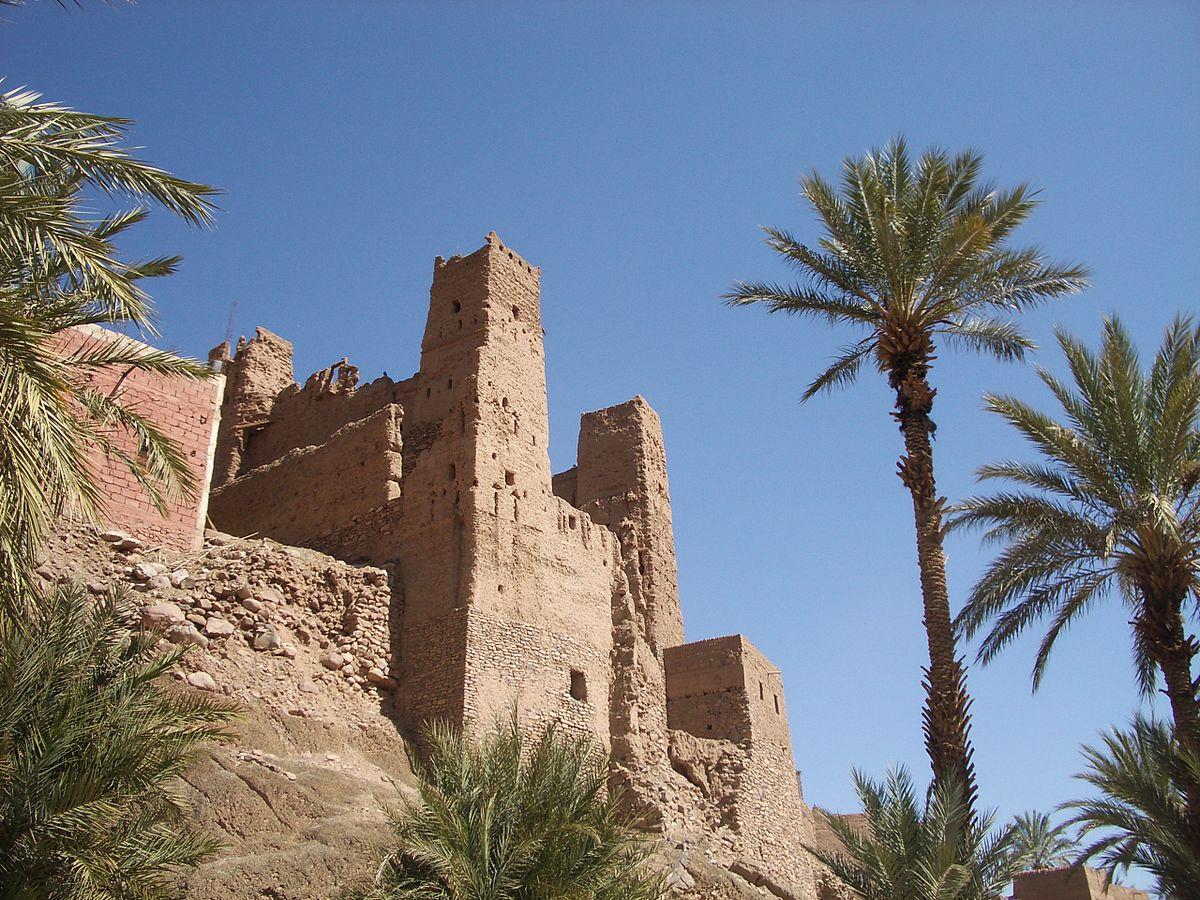Crossing the Sahara
Ibn Battuta set out from Fez in the autumn of 1351 and crossed the Atlas Mountains. After traveling for eight or nine days he arrived at a town called Sijilmasa on the Oasis of Tafilalt. This was the last outpost before crossing the vast Sahara Desert. Here he spent four months waiting for the winter season when the great caravans could cross the desert. It was here where he bought camels of his own while staying with Muslims who offered him hospitality.
And so he set out across the Sahara Desert for Walata in a camel caravan in February, 1352. They traveled in the early morning and late afternoon and rested under awnings to avoid the scorching midday heat. Twenty-five days later the caravan reached the settlement of Taghaza, the main salt-mining center of the Western Sahara. Here workers loaded great slabs of salt which was in great demand in Mali. Taghaza was a desolate place. "This is a village with nothing good about it," complained Ibn Battuta. "It is the most fly-ridden of places." Then he described the huge amounts of gold that changed hands there.
The caravan stayed in Taghaza for ten days where he stayed in a house built entirely of salt except for the camel skin roof! The water was salty, too, and food had to be brought from the outside.
Then began the most dangerous part of the journey - almost 500 miles of sand where only one water place exists. Fortunately there had been some rainfall that year, so there was some scattered vegetation and occasionally even pools of water for the camels. The travelers drank water from goat skin bags. Yet there were more dangers:
"In those days we used to go on ahead of the caravan and whenever we found a place suitable for grazing we pastured the beasts there. This we continued to do till a man ... became lost in the desert. After that we neither went on ahead nor lagged behind."
Ibn Battuta worried about running out of water, about his guides losing their way, and about falling prey to the "demons which haunted those wastes." In the end of April, they arrived in Walata, on the edge of the desert -- a sweltering little town with mud brick houses next to barren hills and with a few palm trees. Ibn Battuta regretted coming at all to this town because he had been treated so much better in other parts of the Islamic world. He resented the governor who offered the visitors a bowl of millet with a little honey and yogurt as a welcoming meal.
"I said to them: 'Was it to this that the black man invited us?' They said: 'Yes, for them this is a great banquet.' Then I knew for certain that no good was to be expected from them and I wished to depart."
He stayed in Walata for several weeks, but as happened in other places on his journey, he took offense at the local customs. After all, he must have thought, he was a special visitor that should be pampered. And even more offensive were the local customs that Ibn Battuta thought were not appropriate for good Muslims.
For example, he expected the sexes to be separated in an Islamic society. On one occasion he entered in a qadi's (judge's) house only to find a young and beautiful woman there to greet him. She was the judge's friend! (Ibn Battuta considered her presence there highly inappropriate). On another occasion Ibn Battuta called on a scholar and found the man's wife chatting with a strange man in the courtyard. Ibn Battuta expressed his disapproval and the man answered,
"The association of women with men is agreeable to us and a part of good manners, to which no suspicion attaches. They are not like the women of your country."
Needless to say, Ibn Battuta considered the local customs inferior to his own. This was not the first time Ibn Battuta took issue with the behavior of local women.
 Side Trip: What were Ibn Battuta's views on women and sexuality?
Side Trip: What were Ibn Battuta's views on women and sexuality?





 Side Trip: What were Ibn Battuta's views on women and sexuality?
Side Trip: What were Ibn Battuta's views on women and sexuality?
